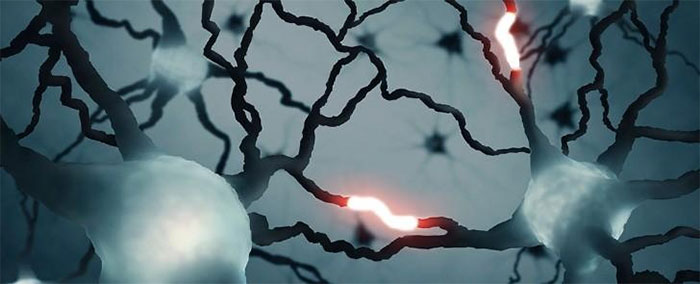Detecting an unknown type of signal in the human brain
Researchers have found a mechanism in the outer cells of the cerebral cortex that creates new signals that allow nerve cells to perform their logical functions.
According to ScienceAlert , researchers have found a new type of signal in the human brain that was previously unknown.

Nowhere is this more complicated than the crumpled, dense outer part of the human cortex, the central nervous system - (Image: Getty Images).
Interestingly, the discovery suggests that our brains may be more powerful computer units than we thought .
German and Greek researchers have found a mechanism in the outer cells of the cerebral cortex that creates new signals that allow nerve cells to perform their logical functions.
In the process, sodium ions pass through the synapse. However, the researchers, analyzing the structure of these sections with a fluorescence microscope, found that individual cortical neurons, when activated, exchanged calcium ions with each other. These signals are formed during the exchange of charged particles of sodium, chloride and calcium. This process is controlled by dendrites.
The researchers compared their function to that of a traffic light or block a signal.
To make sure this was not a measurement error, the researchers examined these signals closely on other brain tissue. The results are identical. Arguably, no place is more complex than the wrinkly, dense exterior of the cerebral cortex of the human central nervous system. The second and third deeper layers are exceptionally thick, filled with branches that perform higher-order functions associated with sensory, thought and motor control.
- Generate brain cells from urine
- Converts normal skin cells into brain cells
- The first time sending signals from the human brain to the human brain
- The device allows to get information from the human brain
- Human face reconstruction from monkey brain signal
- The surprising resemblance between the human brain and the dog
- The new brain map revealed 97 unknown regions
- Compare human brain with supercomputer
- Discover two unknown structures in the human brain
- Published a map of human brain
- The brain and the wonders
- Detecting human brain preserved in mud layer for 2,600 years
- Shocking facts about the human brain
- Humpback dolphins have human-like brain cells
 13 causes of non-itchy rash
13 causes of non-itchy rash How the mouse with human ears changed the world?
How the mouse with human ears changed the world? The truth about 'fried rice syndrome!
The truth about 'fried rice syndrome! What is dental implant?
What is dental implant?